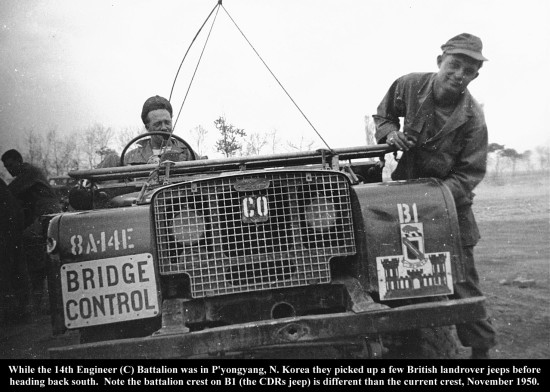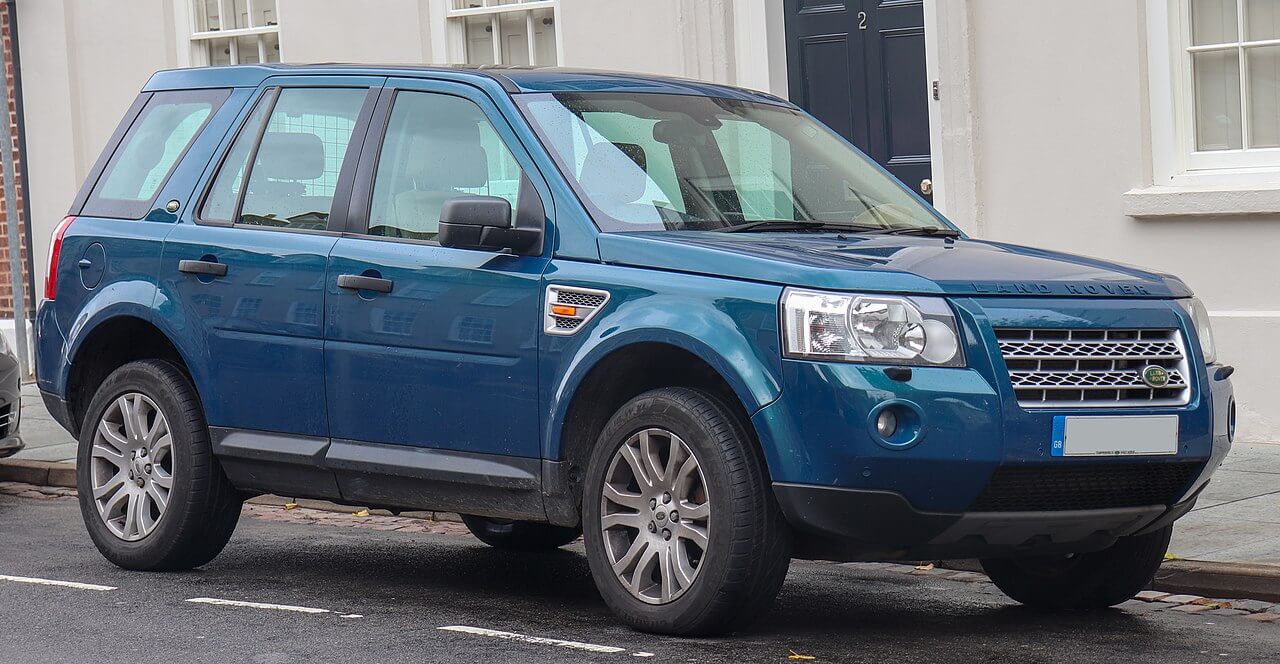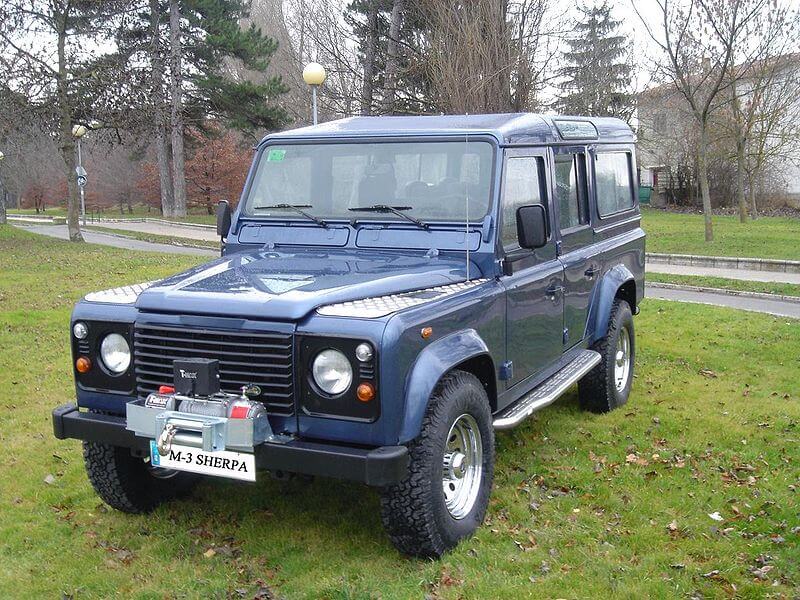Back in 1947 the Wilks brothers, supervisors from the factory of Rover, got the concept of creating an 4×4 automobile for the public. For this, while using strong framework of a Willys 4×4 from the World War 2, modified from Rover, a petrol engine, a transmission, and also the rear axle and with this all they created a proto-type. Initially, the driving position was in the center of the front seat, considering its utilization in the various nations around the world with left or right driving. The idea did not prosper. The body of the first model was straight lines built with riveted aluminum panels to obviate the shortage of iron of the time. A group of three simple front seats on a transverse metal drawer next to two stools located in the longitudinal direction in the rear allowed to transport nine people. The roof was canvas with a metal frame to hold it. The removable front doors in its upper half had its sliding part of sliding glass. In 1949 the manufacture begins in Amsterdam.
Land Rover in British Leyland
In 1967, the brand became part of Leyland, which would later become British Leyland, under the name of Rover Triumph. In 1970, the Range Rover was introduced to the market. In 1975, British Leyland collapsed and is nationalized. During the process, it is recommended that Land Rover be separated from Rover and treated as different but contained companies within British Leyland. By 1976, one million Land Rovers have been produced.
As a separate subsidiary, In 1978, Land Rover Limited is formed part of British Leyland. In 1980, the production of Rover ends at the Solihull plant, with the manufacture of the SD1 being transferred to Cowley, Oxford; so that the plant is dedicated exclusively to the manufacture of the Land Rovers. That year, the 5- door Range Rover was also introduced.
In 1981 Land Rover entered as a supplier of the Camel Trophy and later also as a sponsor when supplying the vehicles prepared for such a test. With this sales promotion, the company achieved the renown and position of leader in the off-road market aimed at a middle-class or upper-middle-class audience.
In 1986, British Leyland is renamed the Rover Group. In April of that year, Range Rover of North America Inc. is created to enter the US market.
In 1988, the company is privatized and bought with British Aerospace, where it is known simply by the name of Rover.
Land Rover Discovery Series I
In 1989, Land Rover Discovery was introduced to the market.
Land Rover in BMW
In 1994, the Rover group is bought by the German company BMW. That year also introduced the second generation of the Range Rover, while the original Range Rover changed to the name of Range Rover Classic, continuing with this until 1995.
The Land Rover Freelander is introduced in 1997 and the second generation of the Discovery in 1998.
In 2000, BMW sold Land Rover to the American manufacturer Ford for about 1,800 million pounds sterling (approximately three billion euros at that time).
Land Rover in the Ford Group
Land Rover was acquired by the Ford Group in 2000 and became part of the prestigious Premier Automotive Group division of that consortium. In 2004, it produced 163,729 vehicles, slightly surpassing its 2003 production in which it produced 162,175 automobiles. In recent years they felt the growing competition on all fronts, from capable off-road cars that challenge the strong Defender to a wide range of sport utility cars in the middle, semi-luxury and luxury categories that concern their Freelander, Discovery and Range Rover. In any case, Land Rover remains one of the most prestigious brands in its category. All of its models are manufactured in Great Britain.
Land Rover has been a pioneer in the development of electronic aids in cross-country driving, such as the HDC system for hill descent control. In 2005 they introduced the new Range Rover Sport, a vehicle derived from the Discovery LR3, which seeks to compete with medium-sized, luxurious and sporty behavior models such as the Porsche Cayenne and the BMW X5. It had a good start to be declared SUV of the year by Top Gear magazine. The engine was a V8 derived from Jaguar, with 4.2 liters shed 396 hp at 6100 RPM. According to factory data, it reached 100 km / h in 7 seconds and 225 km / h of maximum speed.
Freelander 2 2008
At the end of 2006, the second generation of the Freelander was introduced. Competitor direct of the Honda CR-V, the Toyota Rav4, Hyundai Santa Fe, Kia Sorento, Jeep Cherokee, Nissan X-Trail, etc. The Freelander 2 has two engines available: 2.2 diesel 160 hp and 3.2 V6 petrol 260 hp. It also adds the Terrain Response system that facilitates maneuvers in 4X4, with several programs of descent, braking, acceleration, torque recovery, power forwarding, etc.
Due to the crisis in the motor industry, in 2008 Ford sold Land Rover and Jaguar to Tata Motors.
Land Rover Defender
The Land Rover Defender appeared for the first time in 1948 as a 4×4 SUV able to access the most inaccessible parts of the planet. The Defender, throughout its history, has been the choice of explorers and adventurers who are passionate about off-road trips.
The Land Rover Defender was consolidated in the 1950s among many other uses as a military vehicle.
From 1948 to 1959 more than 250,000 units were sold and during the decade of the 1960s, the sales in general of these SUVs experienced remarkable growth, turning the Land Rover Defender into a leader in sales for off-road vehicles of the time. It was the most used model within the Camel Trophy, in different versions. Sometimes it was chosen for the participants and the organization, others only for the organization.
Today it is possible to find this explorer anywhere in the world, with the same image of robustness with which its creators surely thought when creating this vehicle, used as an image of the adventure by authors such as Thorer and Karl-Heinz (1985) or Enrique Revuelta (1987).
Current Land Rover Models
- 1989-present – Land Rover Discovery
- 1998-2015 – Land Rover Freelander
- 1973-present – Range Rover
- 2005-present – Range Rover Sport
- 2011-present – Range Rover Evoque (The Little Brother of the Range Rover)
- 2015-present – Land Rover Discovery Sport
- 2017-present – Range Rover Velar





0 Comments